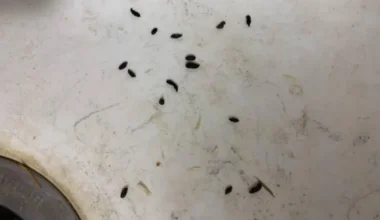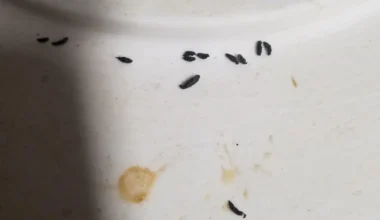Mice in walls but not in house is likely among the least favorite experiences as a homeowner. After gaining entry, these small creatures can easily conceal themselves within the confines of your home’s walls. The imperative to keep your house free of mice isn’t just a matter of cleanliness or comfort, but a significant concern due to the considerable damage they can inflict. Mice, along with other tiny pests, can cause structural damage to walls, gnaw on electrical wiring, and carry harmful pathogens that pose a health risk to humans.
Mice in walls but not in house: how they get in

Given their small stature, mice are capable of slipping through gaps as small as 6-7 mm (about the diameter of a normal-sized pen. Hence, even the most minute fissures in the walls, ceilings, floors, or foundational structure of your house can provide entry points for these miniature intruders.
Additionally, mice excel in climbing. They can ascend trees and, contingent on the surface texture, even scale vertical walls. This climbing and jumping prowess enable them to reach and exploit openings located significantly above ground level. Once they have infiltrated a building, including your home, mice employ similar maneuvers to penetrate the interiors of walls.
What are the usual routes mice use to infiltrate the walls of a house? The typical entry spots for these small intruders are:
- Openings created for utility pipes and wires
- Decaying siding
- Fissures in the home’s foundation
- Accessible crawl spaces
- Weep vents (purposely designed openings in brick walls that let accumulated water drain out)
- Joints where building materials fail to meet perfectly
- Door and window frames that lack proper sealing
- Air ventilation systems
- Roof vents and flue pipes
Signs of mice in walls but not in house
In addition to actually seeing a mouse darting around your house, there are multiple other indicators of an infestation you should be on the lookout for. Identifying signs of rodent activity early can help mitigate the extent of an infestation and the subsequent damage to your home.
- Feces (approximately 1/4″ in length and tapered at least at one end) or urine.
- Nests constructed from paper, cardboard, or fabric materials.
- Tampered insulation (if pests have either nested in or obliterated your insulation, it might require replacement).
- Evidence of gnawing or chewing on wood or drywall.
- Sounds of mice squeaking within walls.
- A distinct odor emanating from rodent droppings or decomposition.
You may likely hear the sounds of mice bustling within your walls. Mice are notably nocturnal creatures, so if you notice squeaking, rustling, or gnawing sounds emanating from within the walls during the night, it could be a reliable indication of mice in walls but not in house.
Dead mice in walls
Mice in walls but not in house infestation can sometimes lead to the unpleasant scenario of mice dying inside. This could be a result of ingesting rodenticides, getting trapped in confined spaces, and succumbing to starvation, or they may just reach the end of their natural lifespan with your walls becoming their ultimate burial ground.
Regardless of the reason, if you detect a strong, foul odor permeating from your walls, it could be a telltale sign of a decaying mouse.
You then want to remove any deceased mice from your home promptly. In many instances, extraction of a dead mouse from within a wall entails cutting into the drywall. Therefore, you should consider the services of a professional to minimize unnecessary damage to your walls.
How to deal with mice in walls but not in house
Mice elimination from your walls can be quite challenging. Nevertheless, there are steps you can take to make your home less welcoming to existing rodents and to deter potential future infestations. Here are some strategies to keep mice from invading walls:
1. Secure any cracks in your walls
First, perform an initial assessment to identify the entry points for mice.
Refrain from using materials such as plastic, rubber, or wood as a sealant, given that mice can easily chew through them. Instead, go for wire or stainless steel mesh, or quick-setting cement. Seal walls either before a mice infestation or after the existing one has been dealt with.
2. Don’t downplay proper tree and foliage maintenance
Ensure that tree branches and shrubs are pruned and kept at least a foot-and-a-half away from your house. Mice can climb and jump, and by creating a buffer between your home and vegetation, you make it more challenging for mice to use them as a means to access the higher sections of your home.
3. Set mouse traps
Position traps along the walls, with the trigger end facing the baseboard. This ensures mice encounter the trap directly in their path.
4. Eliminate food and water sources
Clean up any crumbs, avoid leaving food out (unless it’s serving as bait in traps), and ensure all sources of moisture are addressed regularly.
Where mice can use to enter your walls
Below are common mouse entry points into your walls.
1. Broken vents
Various vents that lead outside include dryer vents, gable vents, attic vents, turbine vents, soffit vents, and crawl space vents. These vents are designed to facilitate airflow and provide ventilation to your home.
However, when gaps and openings are left unsealed, mice can easily follow the air currents and make their way inside. This can lead to nesting within wall voids, resulting in unsettling scratching noises and movements during the night.
To address torn or damaged vents, the recommended solution is to repair or replace them or implement a barrier. This approach, known as “exclusion work,” involves using materials to physically prevent rodents from entering. Some pest control companies offer specialized exclusion services to tackle these issues directly with long-term or permanent solutions.
If the extent of the infestation is beyond your capabilities or too costly to handle independently, pest control companies are your go-to choice.
2. Foundational cracks
Mice also enter your walls through tiny cracks in the foundation or exterior, with an opening as small as 1/5 inch being sufficient. Their flexible bodies allow them to squeeze into spaces that may not have crossed your mind before.
Cracks often occur when the ground settles, causing shifts in the foundation. Improper drainage, faulty gutters, and downspouts can also contribute to water erosion, leading to cracks. While the severity and direction of cracks can indicate various underlying issues, any available space can serve as an entry point for mice. Once inside, mice can easily enter your walls without significant obstacles.
3. Weep holes
Weep holes are intentional gaps left between bricks during masonry work on houses or other man-made structures. Their purpose is to prevent the accumulation of moisture behind the bricks, which can cause structural issues. It is generally advised not to seal or fill in weep holes; however, you want to screen them off to prevent mice entry.
Weep holes are typically large and exposed, providing an ideal space for infestations to occur. Often, the most effective approach to maintain weep holes and keep mice away is to employ professional materials that block their entry while still allowing ventilation.
4. Unsealed utility pipes
Utility pipes, including sump pumps and other plumbing, are not always fully sealed where they meet the exterior of the house. Mice can exploit the gaps around piping to enter your basement and walls. Take a stroll around the exterior of your home and examine these gaps. Any exposed entry points created by piping should be promptly addressed.
5. Builder’s gaps
During home construction, a builder’s gap, also known as a construction or roof gap, is occasionally left to enable proper ventilation. This gap occurs at the horizontal junction where the roof and gutters meet. Although it is usually concealed by shingles, you might be unaware of the presence of an exposed builder’s gap on your roof. Unfortunately, this space is notorious for providing access to mice and other rodents, allowing them to enter attics. Once in your attic, mice easily spread into wall voids in your home.
Conclusion—mice in walls but not in house
When dealing with the task of extracting mice from your walls, your most effective strategy would be to engage a rodent control professional.
Attempting a do-it-yourself approach may lead to subpar results and potentially exacerbate damage to your home. A pest control expert can ultimately save you both time and money by employing their specialized knowledge to devise a comprehensive strategy for eradicating the mice from your walls and home.
Although there are numerous DIY rodent control and removal methods available, the most comprehensive solution involves reaching out to professionals to formulate a plan that’s custom-designed for your home and the specific details of your infestation.






